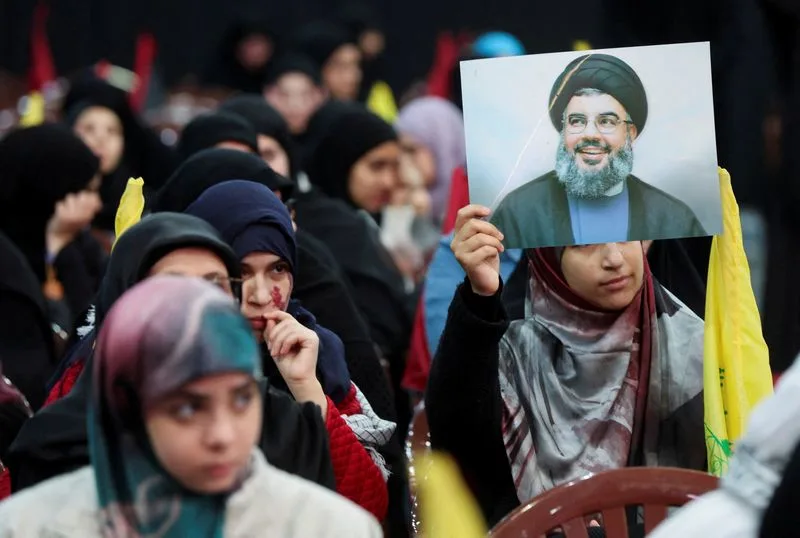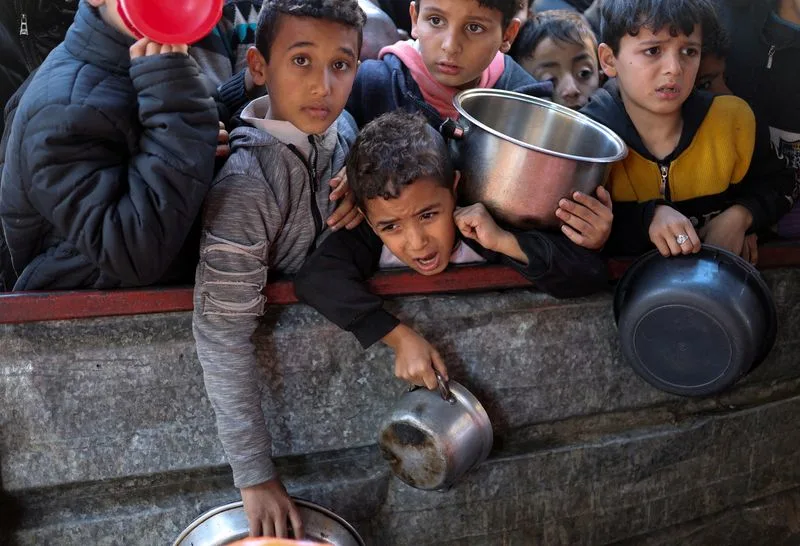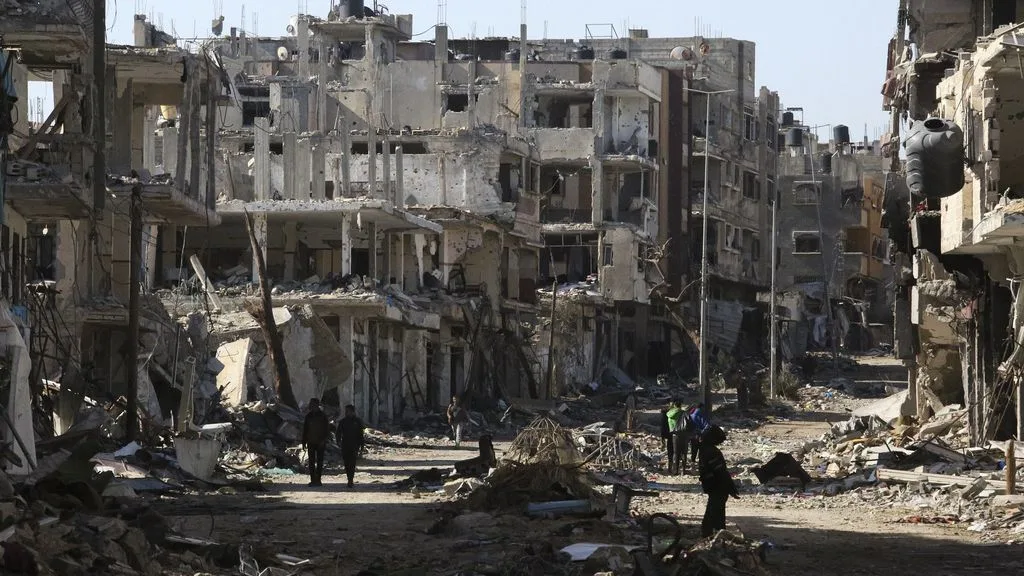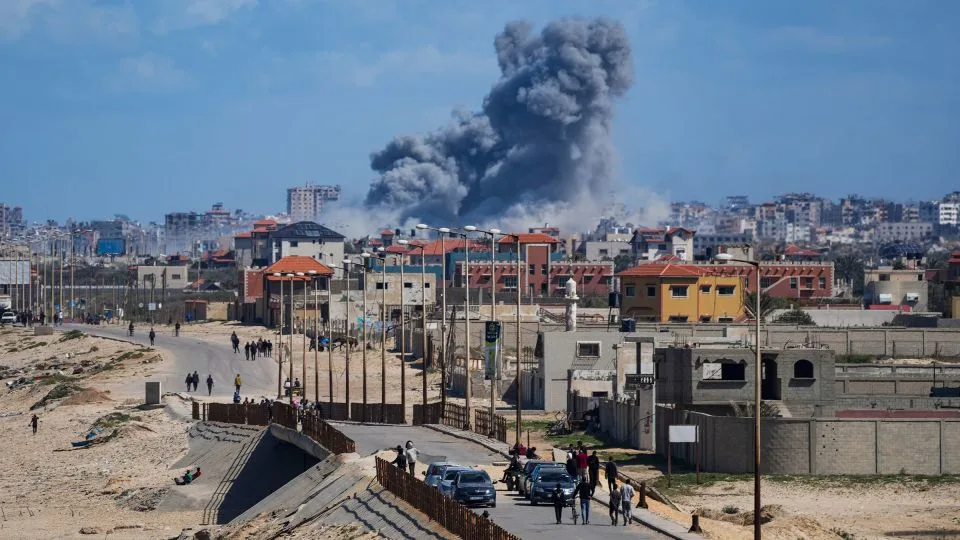Lack of operational plans to take over Gaza Strip meant the ground invasion was delayed, while civilians moved into the strategic border area and international opposition grew.
After decades of efforts to keep the Hamas threat in check, Gaza’s southernmost city of Rafah — and the Philadelphi Route running between it and Egypt’s border — once again is a major problem for Israel.
Palestinians began digging tunnels under Israel’s border fences during the First Intifada in the late 1980s, and in the ensuing decades, the Israel Defense Forces tried a range of methods to uncover the tunnels and keep terrorist groups from bringing in deadly new weapons.
The focus was on the Philadelphi Route, the 14-kilometer security road dividing the Gazan and Egyptian sections of Rafah. But it was perilous work. During the Second Intifada, the corridor is where 13 IDF soldiers were killed in the 2004 APC Disaster, and Hamas managed to detonate explosives under the JVT outpost, killing five soldiers.
Over the objections of Israel’s security services and many officials, Israel withdrew from the Philadelphi Route in the 2005 withdrawal from Gaza. Israel allowed Egypt to introduce 750 heavily armed border guards, but they failed to prevent a massive increase in smuggling into the Strip.
When Hamas forcibly ejected the Palestinian Authority from Gaza in 2007, they used the tunnels — and occasional destruction of the Egypt border fence — to fill their coffers, and to build up their military capabilities.
Now, four months after Hamas used those weapons to massacre 1,200 Israelis and take hundreds more hostage, Rafah has become a tangled quandary for Israel’s leadership, one that threatens to derail the entire war effort.
With the exception of Rafah, Israeli forces have maneuvered into all of Gaza’s cities and driven Hamas fighters underground. It is hard to imagine Israel meeting its war aim of toppling Hamas if it doesn’t take Rafah. Most of the remaining functioning Hamas battalions are in the city, and if Israel doesn’t take control of the border area, the Gaza-ruling terror organization can resume smuggling new weapons in — and potentially hostages or senior leaders out — when the fighting ends.
Prime Minister Benjamin Netanyahu said as much on Friday. “It is impossible to achieve the war aim of eliminating Hamas while leaving four battalions in Rafah,” his office said in a statement.
A growing strategic headache
But the circumstances are becoming more problematic for Israel with each passing day.
From the beginning of the war, Israel told Gazans to move south, and over 1 million civilians are now in and around the city.
Egypt has warned that any ground operation there or mass displacement across the border would undermine its four-decade-old peace treaty with Israel.
“Continuing Israeli strikes on densely populated areas will create an unlivable reality. The scenario of mass displacement is a possibility. The Egyptian position on this has been very clear and straightforward: We are against this policy, and we will not allow it,” said a spokesperson for Egypt’s foreign ministry.
Images in recent weeks circulating on social media have shown Egypt apparently fortifying its defenses at the border, with additional barbed wire and walls.
The US has also been increasingly strident in its warnings about the consequences of an operation in Rafah.
US State Department deputy spokesman Vedant Patel said on Thursday that the US had “yet to see any evidence of serious planning for such an operation,” adding: “To conduct such an operation right now with no planning and little thought in an area” where one million people are sheltering “would be a disaster.”
The White House issued a similar warning.
“Any major military operation in Rafah at this time, under these circumstances, with more than a million – probably more like a million and a half – Palestinians who are seeking refuge and have been seeking refuge in Rafah without due consideration for their safety would be a disaster, and we would not support it,” National Security Council spokesperson John Kirby told reporters.
Waiting this long to tackle the strategic border area has already made it less likely that the IDF will be able to do so, at least under the conditions it wants.
Putting off the conquest of Rafah and the border may turn into the biggest strategic mistake of Israel’s ground operation against Hamas.
A canceled plan
The roots of the war’s mismanagement go back years before it erupted.
By the time Hamas jeeps were pouring through dozens of breaches in the state-of-the-art border fence on October 7, it had been almost a decade since the IDF had an operational plan ready for conquering the Gaza Strip and defeating Hamas.
Gen. Sami Turgeman, head of the IDF’s Southern Command during Operation Protective Edge in 2014, came into his position and found that there was no such plan. Yoav Gallant, who was in the post when Hamas took over the Strip in 2007, declined to create one, and no one decided to do so despite the rounds of fighting against Hamas in the interim.
Turgeman’s plan had three options, the largest of which was for the takeover of Gaza. The smallest one envisioned brigade-size IDF assaults against Hamas battalions.
The medium option, called Kela David (David’s Sling), would cut off Gaza City and the northern Strip from the south, using Division 162 north of the city and Division 36 to the south.
The plan for retaking Gaza called for four divisions attacking simultaneously, adding an assault by Division 98 on Khan Younis, and Division 252 on Rafah. Each city would be cut off from the others within two weeks, with civilians offered sheltered zones along the coast. After the quick conquering of the Strip, the clearing phase would begin in the cities.
This plan was presented to the cabinet at the beginning of Operation Protective Edge, but was turned down.
Even so, the existence of a well-prepared operational plan had results in the field.
“The operational plans of the Southern Command for combat in the Gaza Strip were updated and approved,” wrote Col. Avi Dahan in the IDF journal Ma’arachot. “In the Southern Command, the Gaza Division, and the cross-theater divisions, there were deep operational processes, comprehensive battle preparations were prepared, and professional learning and training processes were carried out.”
The processes, argued Dahan, “increased the professional confidence of commanders and soldiers, amplified the physical and mental readiness, and improved familiarity with the enemy and terrain in Gaza.”
After Turgeman moved on in 2015, his operational plan was subsequently canceled and not replaced by any of his successors, which include current Chief of Staff Herzi Halevi.
Conquering Gaza was seen as unrealistic given the clear aversion by the political leadership to even countenance reassuming responsibility for two million Gazans.
“Resources are limited,” an officer who worked on operational plans for Gaza during that period told The Times of Israel, “and there was no desire to put resources into a plan that had no chance of being used.”
Indecisive incursion
The lack of a plan to topple Hamas impacted the way the IDF fought after October 7. Because it needed time to draw up plans, the IDF waited three weeks to order the ground incursion into Gaza, not exploiting the immediate aftermath of the Hamas attacks when sympathy for Israel was at a high on airstrikes that began taking their toll on Gazan civilians.
It also affected the intelligence Israel possessed. If there was no chance of maneuvering deep into Gaza, there was little reason to expend resources on mapping out the Hamas tunnels that did not head toward Israel.
That choice has slowed the IDF operation significantly, and has made it far more dangerous for the maneuvering forces.
And when the incursion came in late October, it was not fought in an aggressive fashion that maximized Israeli advantages.
“When the offensive finally began, it seemed that some of its actions were rooted in the concept of indecisive maneuver,” wrote Brigadier-General (res.) Eran Ortal. “Between a decisive approach aimed at quickly taking over crucial enemy positions and one aimed at eliminating terrorists wherever they were, the IDF’s maneuvers were more in line with the latter. A maneuver approach would call for multiple simultaneous efforts to prevent the adversary from retreating and reorganizing.”
“Such an offensive should have begun as quickly as possible, with maximum force, while heading towards multiple locations simultaneously,” Ortal continued.
Heading into Gaza City first made perfect strategic sense. The most effective Hamas battalions in terms of rocket fire were in the northern Strip, and their range would be limited somewhat if Hamas had to fire from further south.
Gaza City was also the center of Hamas’s governing capabilities.
But it is not clear why IDF forces didn’t take Rafah at the same time, as envisioned in the plan for retaking Gaza. There were far fewer civilians there at the time, making it easier for Egypt and the US to accept a major operation there.
And less than a month after the Hamas atrocities — and before Gazan casualties had reached unprecedented levels — there would have been far less room internationally to criticize Israel as it kicked off its ground operation.
‘No compromise’?
For now, Israeli leaders promise they will take Rafah. On Wednesday, Netanyahu said he ordered troops to “prepare to operate” in Rafah, after rejecting Hamas’s “delusional demands” in hostage deal talks.
According to the Israeli official, there would be “no compromise” on toppling Hamas militarily and politically, which would mean operating in Rafah.
A second Israeli official told The Times of Israel on Thursday that the operation in Rafah will not be a large-scale assault by a full division like a current operation in Khan Younis, but will instead be organized around targeted pinpoint raids.
Israeli forces also have stepped up airstrikes on the city, and Arabic-language reports say IDF ground forces are approaching the edges of Rafah.
None of this means, however, that an operation is a given. An order to “prepare to operate” is different than a directive to attack, and, as Israel is still looking to pressure Hamas to agree to a hostage deal on more favorable terms, threats to take Rafah could make an immediate ceasefire seem more pressing to Hamas leaders.
Netanyahu said that he recognizes that “a major operation in Rafah demands the evacuation of the civilian population from areas of combat,” and that he instructed the IDF to come up with a plan to do so while defeating Hamas forces in the city.
It may well turn out that the IDF conquers the city, as Netanyahu and his war leadership promise. But the mission would have been far more certain if Israel’s political and military leadership took the Hamas threat more seriously before October 7, and drew up a more aggressive plan in the weeks afterward.






